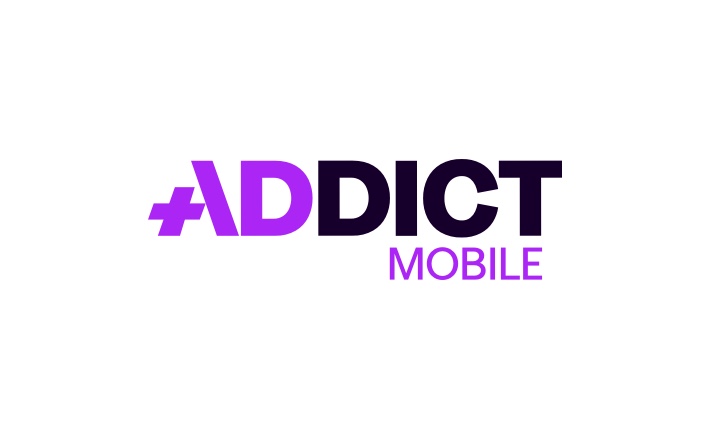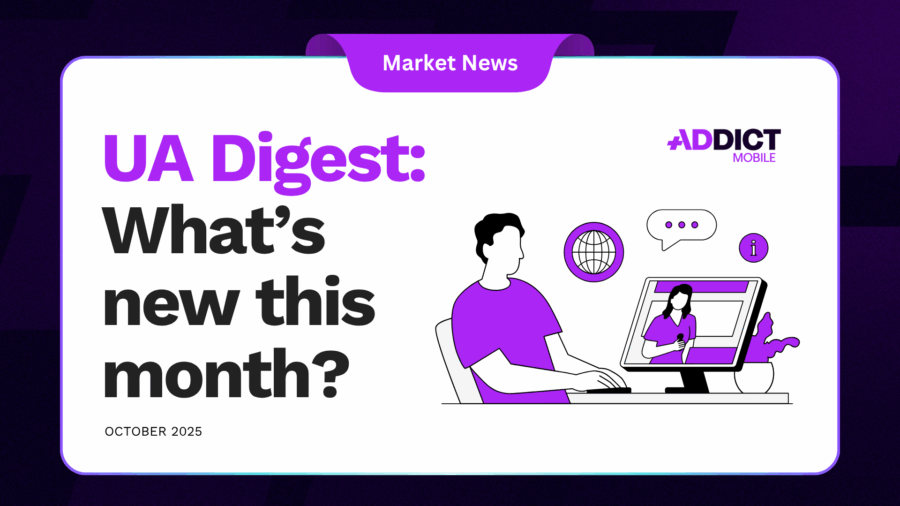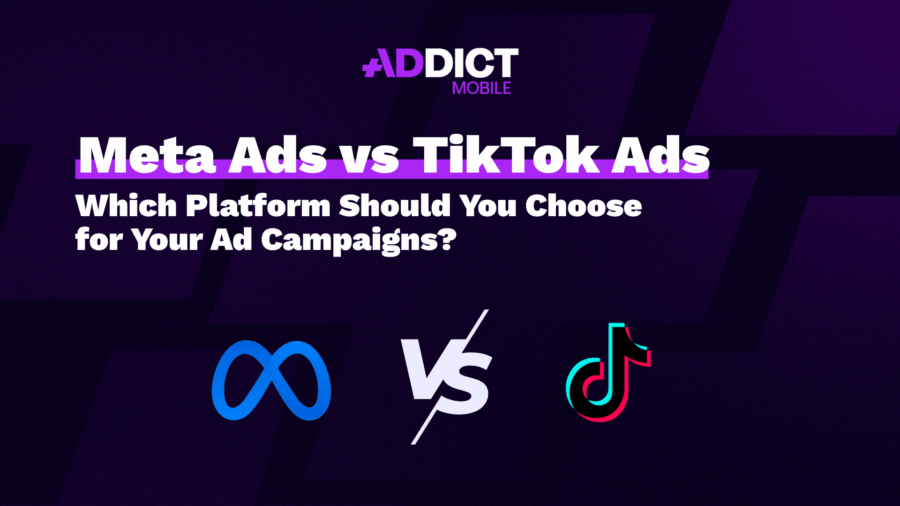CPI: The criteria that impact its value – Emphasis on the correlation between CPM and broadcasting country –

When it comes to application and acquisition strategy, the key market indicator is never far away: that is to say the CPI, or cost per installation. In this article, we explain the parameters that influence its final value in order to provide some context to the observed market data.
CPI: the market benchmark
For the entire industry, the CPI is the reference KPI since it allows to gauge the cost of a user. However, the CPI is not an end in itself since an application business cannot rely solely on this KPI. Other parameters are essential: UX, monetization, customer retention, content, to name but a few.
However, the CPI remains the most important element for application publishers since it allows them to benchmark themselves against the competition. They can thus assess the viability of a business model. In addition, almost no application is able to make a living from its organic traffic. Media investment, translated into figures by the CPI, can then become a success or a failure (also called a “make or break”) for a publisher.
CPI is the result of three ratios:
- CPM: the cost per mille or cost per thousand, which is the the cost of displaying 1,000 ads;
- CTR: the Click Through Rate, which represents the number of users who click on the ad in relation to the number of impressions;
- CVR: the Conversion Rate, i. e. the number of users who install an application after clicking on an ad.
The idea is to maximize all these ratios to reduce your CPI.
We have focused here on the relationship between CPM and CPI and have highlighted how it is closely linked to the broadcasting country – grouped here as tiers[1].
This article focuses more specifically on the Facebook[1] campaigns launched in 2018 and is based on data collected by Addict Mobile. This data comes from more than 12 million installations registered worldwide on more than 120 applications between January 1, 2018 and the first quarter of 2019.
CPI per tier[1]
Our study focused on the CPI according to countries gathered by tier. In tier 1 – comprised of the most developed countries such as Australia, the United States, France, Canada and Great Britain –, the highest CPIs are observed. While in countries such as Argentina, Chile, Greece, Indonesia or Thailand – which are in the third tier –, the CPI is 3.5 times lower than the tier 1. Acquisition costs are very low for two main reasons:
- The purchasing power of the users is smaller;
- Monetization of these users is lower.
Competition is therefore less fierce in these markets.
Broadly speaking, advertisers target countries where users have a high added value, which is reflected the CPIs per tier. Indeed, a Swiss or American user, because of their high purchasing power, is more inclined to monetize. They will therefore be a target of choice for advertisers.
CPI per country
To go a little further in our study, we have chosen to focus on specific countries, namely those that have generated at least 100,000 installations for Addict Mobile. They are classified by CPI (see graph 2).
Three country groups stand out.
Group 1: India, Philippines, Brazil (tiers 3,4 and 5)
Although these three countries have low CPIs, they offer enormous potential for two main reasons:
- Their strong commitment in apps;
- Their large population allows for a significant reach.
Please note that the Philippines, thanks to a very low CPI, are often chosen for mobile game soft launches in order to analyze application engagement and potential bugs (UX, servers, etc.).
Brazil has enormous potential, as users show an interesting propensity to buy (vs. CPIs), which strongly encourages publishers to distribute advertising in Brazil.
Finally, India is to be closely monitored due to its strong growth and very reasonable CPIs.
Group 2: Anglo-Saxon Countries (tier 1)
These countries remain the most expensive in terms of acquisition costs. This group includes Australia, the United States, Great Britain and Canada.
Why? Because the majority of applications on the market are produced primarily – or even exclusively – in English. They are therefore not translated into other languages. Publishers thus target Anglo-Saxon countries first to maximize the in-app experience of users, which leads to concentrating many advertisers on these countries.
In addition, these countries are technologically advanced. High-end devices not only have a high penetration rate, but they also have a high purchasing power and therefore a high CPI.
Group 3: European Countries (tiers 1 and 2)
The costs in European countries are lower than Anglo-Saxon countries. This difference is due to the linguistic and cultural specificities of each country. Indeed, as mentioned above, not all advertisers translate their applications into French, German, Italian, Spanish or Dutch. This trend therefore reduces competition in these markets.
Also, an untranslated application is often synonymous with limited user engagement.
It should be noted that Nordic countries and Switzerland are not included in this ranking, but their CPIs are closer to the Anglo-Saxon countries. Why? Due to their very high attractiveness, their command of the English language and a limited volume of users. Norway and Switzerland have the highest ARPUs (Average Revenue Per User).
The CPI relies on the CPM
It is important to remember that the CPM (cost for 1000 impressions), which corresponds to the price of the media space, has a direct impact on the final CPI and many people ignore it when launching mobile acquisition campaigns.
The CPM is the key market indicator that depends on the country, the broadcasting OS, competition, seasonality, target audience, etc. It is therefore necessary to know how to use it to control these costs.
We can observe here the impact of the broadcasting country on the CPM and ultimately on the CPI.
Indeed, the more attractive a country is, the more the CPM will increase as demand in this market is strong. The famous law of supply and demand. Advertisers are looking for the most “profitable” users – those who live in countries with high purchasing power –, which increases competition and therefore the final CPI. This trend is confirmed by chart 3. We observe that the CPMs and CPIs are correlated in each tier.
Case study: the gaming sector
The gaming sector has truly been the pioneer in terms of acquisition. It is a very interesting sector to analyse because it is one of the few that allows an application to be distributed worldwide: few localization constraints and no product delivery, specific regulation or absence of the brand on the market.
Based on this assessment, it is therefore possible to have a global vision on the CPIs. The aim is to observe a trend between markets in order to better compare them and not decide on the value of the CPI as such. An observation that can be replicated to any other vertical.
Chart 4 illustrates perfectly the correlation between the CPM and the CPI, which is global in all countries. It must be noted that the results observed here are similar to the previous observations. We can therefore conclude that the acquisition market is regulated by the media space purchase price.
In addition, thanks to Addict Mobile’s expertise, we know that although CPIs are strong in the United States, Australia and Switzerland, these countries remain the most profitable for most mobile games. Once again, advertisers will seek the user value (ARPU) regardless of the CPI. The market regulates itself in a way: we are willing to spend more for a user if they have more value.
In the light of this information, two issues emerge:
- The CPI Optimization.
The advertiser is not powerless in the face of the close link that binds the CPM to the CPI. The work on targeting, designs, audiences or bidding allows to optimize the intermediate transformation rates (click rate and conversion rate at install) and in the end the CPI. This allows you to get the most out of your acquisition campaigns, and therefore optimize your profitability. This is the spearhead of Addict Mobile, whose expertise at this level allows it to bring real added value to its customers. - The CPI is not equal to performance.
It is important to always relate your CPI to its final objective (i.e. retention, in-app purchase, subscription, ROAS, etc.) in order to get closer to the most profitable audiences – whether they are expensive or not. It is indeed essential to remember that a quality user has a cost, but it is also often the same user who provides the best profitability.
It is then the responsibility of the advertisers to decide on the most profitable combination based on their market. A more complex task than it seems, which generally requires the support of online acquisition experts.
[1] In order to analyze this data on a comparable basis, we only took into account the data provided by Facebook via the allocation from the Facebook SDK.
NEWS
Article in relation

Cheat Sheet #3: Everything You Need to Know…
Q5 is the post-holiday “bonus” period running from December 26 to mid-January, a unique opportunity for advertisers to keep momentum after the holiday...
Published on 5 November 2025
UA Digest #10 : What’s new this month?
Discover our User Acquisition Digest, your monthly update on the latest trends and news in mobile marketing and user acquisition! Meta Andromeda: the...
Published on 28 October 2025
Meta Ads vs TikTok Ads: Which Platform Should…
In 2025, social ads have become a must for capturing attention and driving performance. When it comes to two major players, Tiktok ads...
Published on 20 October 2025

